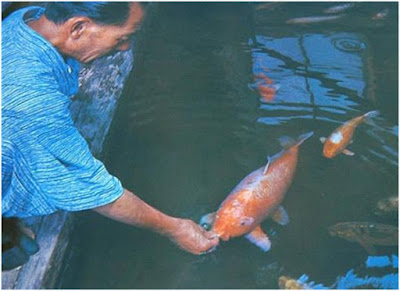Hanako an excerpt from fishgirlskoipond.blogspot.com Hanako, a scarlet koi, was the oldest of the lot. She was hatched in 1751. To put that in historical perspective she hatched 25 years before the Declaration of Independence was signed. This was verified by Prof. Masayoshi Hiro, D.Sc., Laboratory of Domestic Science, Nagoya Women's College. She removed a scale from Hanako’s body and counted the growth rings under a microscope, much as you would count the growth rings of a tree. In 1966 when the interview with Hanako’s owner was aired on radio, the other koi in the pond were 170, 155, 151, and 141. Unfortunately Hanako is no longer alive today. She died July 17, 1977 and was 226 when she died.

